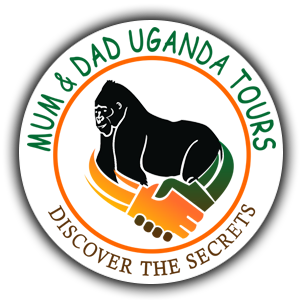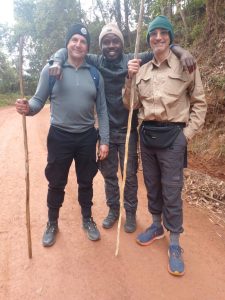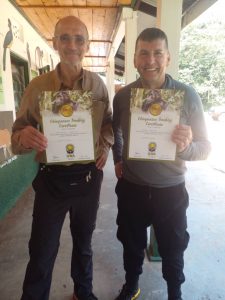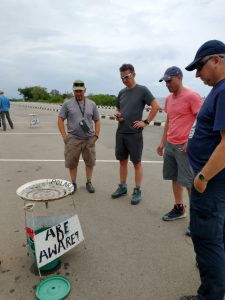Each of the three countries that offer gorilla trekking—Rwanda, the Democratic Republic of Congo (DRC), and Uganda—has habituated gorilla families available for trekking. However, it’s important to note that the composition of these families and their availability for trekking may change over time. Here are some of the habituated gorilla families that were known to exist in each country:
Rwanda (Volcanoes National Park):
- Susa Group: Also known as the Susa A Group, this was one of the largest and most famous gorilla groups, known for its size and dramatic history.
- Amahoro Group: Known for its peaceful and calm demeanor, the Amahoro Group is a popular choice for trekking.
- Sabyinyo Group: Named after the nearby Mount Sabyinyo, this group is known for its proximity to the park entrance.
- Kwitonda Group: Originally from the DRC, the Kwitonda Group migrated to Rwanda. It is named after the dominant silverback, Kwitonda, which means “humble.”
- Ugenda Group: The name “Ugenda” means “mobile,” reflecting the group’s tendency to move around within the park.
- Hirwa Group: Formed through the merging of various gorillas from different families, Hirwa is known for its intriguing dynamics.
Democratic Republic of Congo (Virunga National Park):
- Rugendo Group: This was one of the habituated gorilla families in Virunga National Park, known for its stunning mountainous habitat.
- Humba Group: The Humba Group is known for its size and is named after the dominant silverback, Humba.
- Mapuwa Group: The Mapuwa Group was another habituated family in Virunga, known for its lush forest habitat.
- Nyakamwe Group: This group was named after the dominant silverback, Nyakamwe.
Uganda (Bwindi Impenetrable National Park and Mgahinga Gorilla National Park):
Uganda boasts 11 habituated gorilla groups or families that are open for trekking experiences, with one additional group reserved for research purposes. These groups include Rushegura, Habinyanja, Mubare, Nkuringo, Bitukura, Oruzogo, Mishaya, Nshongi, Kahungye, as well as the more recently established groups known as Busingye and Bweza. These diverse gorilla families offer travelers a wide range of opportunities to witness these incredible creatures in their natural habitat while contributing to their conservation.
Below are the most common habituated families:
- Mubare Group: One of the first habituated gorilla families for tourism in Bwindi.
- Habinyanja Group: This group is known for its challenging terrain in Bwindi’s hilly terrain.
- Rushegura Group: Named after the nearby Rushegura River, this family is known for its peaceful dynamics.
- Nkuringo Group: Named after the Nkuringo Hill, this group is known for its beautiful but steep terrain.
- Nshongi Group: One of the largest habituated groups, known for its size and social interactions.
- Mishaya Group: Named after the dominant silverback, Mishaya, this group is known for its turbulent history.
- Bitukura Group: This family is named after the dominant silverback, Bitukura, and is known for its playful juveniles.
- Oruzogo Group: Named after one of the first juveniles born into the group, Oruzogo is known for its energetic youngsters.
- Kyaguliro Group: Known for its location near the Buhoma sector of Bwindi.
Please note that the composition of gorilla families and their availability for trekking may change over time due to natural factors and human interactions. It’s advisable to check with the relevant park authorities or tour operators for the most up-to-date information before planning a gorilla trekking experience.

 Expert Guides and Rangers: Trekking groups are led by experienced guides and park rangers who are familiar with the gorilla families, their behavior, and the terrain. They prioritize safety and are trained to handle various situations that may arise during the trek.
Expert Guides and Rangers: Trekking groups are led by experienced guides and park rangers who are familiar with the gorilla families, their behavior, and the terrain. They prioritize safety and are trained to handle various situations that may arise during the trek. What is the cost of a gorilla permit?, A
What is the cost of a gorilla permit?, A  Dry Season (June to September):
Dry Season (June to September):